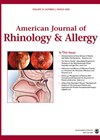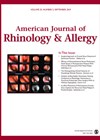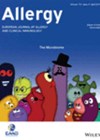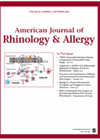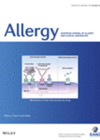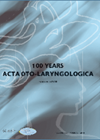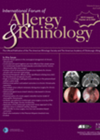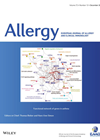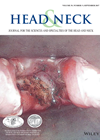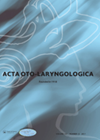
Journal Reviews
How to manage the concha bullosa in FESS
It is an interesting concept to assess how much impact the presence of a large concha bullosa (CB) has on both severity of chronic rhinosinusitis (CRS) and also postoperative outcomes after FESS. The authors accept that the paper has limitations...
A classification of a new cell - the retrosphenoid cell
This is a concise paper which describes a previously undefined type of cell within the sphenoethmoidal complex. It identifies the retrosphenoid cell, differentiated from an Onodi cell by being entirely within the posterior wall of the sphenoid sinus, lying between...
Sinus implants to treat recalcitrant polyps
It is well established that the burden of chronic rhinosinusitis on healthcare costs and patients’ quality of life is high, and that current mainstream treatment options of oral or topical steroids are not without problems. This paper compares two RCTSs...
Chronic rhinitis endotypes
Chronic rhinitis (CR) is common with up to 30% of the population affected, with a significant impact on quality of life. CR includes several phenotypes with different pathogenesis including allergy, autoimmune, age, occupation, pregnancy, neurogenic and drugs. Such variation means...
Balloons – more complicated than first thought?
This study describes the complications seen after balloon sinuplasty (BSP) - a commonly performed procedure (particularly in the USA where it is often performed as an office procedure) versus traditional functional endoscopic sinus surgery (FESS). The data source was a...
The snotty child?
This article is interesting for those of us who see children regularly in secondary care but rarely see them with chronic rhinosinusitis. The authors remind the reader of the EPOS guidelines for diagnosis of CRS in children: two or more...
Chronic rhinosinusitis, are we treating the same disease?
Chronic rhinosinusitis (CRS) is a heterogenic disease. The effects of heterogeneity on treatment outcome are not very clear. Authors used clinical features such as endoscopic findings scores and full blood count findings in addition to analysis of 35 molecular markers....
Balloon compared to FESS – long-term patient satisfaction
Balloon compared to FESS – long-term patient satisfaction This paper is the first controlled study of balloon sinoplasty’s long-term efficacy, with a follow-up extending over five years. There were 208 patients analysed and 88 recruited. Exclusions were nasal polyps grade...
Method of delivery: all topical nasal corticosteroids are not made equal
There is an increasing body of evidence that the role of surgery for chronic rhinosinusitis is to facilitate the delivery of topical medical treatment – most notably, topical corticosteroids. Two recent studies, one using flow dynamics and another one examining...
Stem cells in nasal polyposis
Chronic rhinosinusitis with nasal polyps (CRSwNP) is common and is multifactorial with increased T-helper 2 response and active role of interleukin 5. It can be associated with asthma and control of CRSwNP improves lower airway disease. Due to constant cellular...
Evidence for diagnostic role of narrow band imaging in the outpatient setting for head and neck squamous cell carcinoma
Narrow band imaging (NBI) uses light in the blue and green spectrum to differentiate areas of carcinoma from normal or inflammatory tissue. This tertiary referral head and neck unit in Spain used white light endoscopy as initial screening for all...
Does endoscopic tympanoplasty give better results than a conventional approach?
This is a retrospective review looking at two groups of patients who had undergone middle ear surgery for chronic otitis media (perforation, retraction pocket/cholesteatoma) either open or endoscopic. Four hundred and five patients underwent open ear surgery and 501 endoscopic,...

